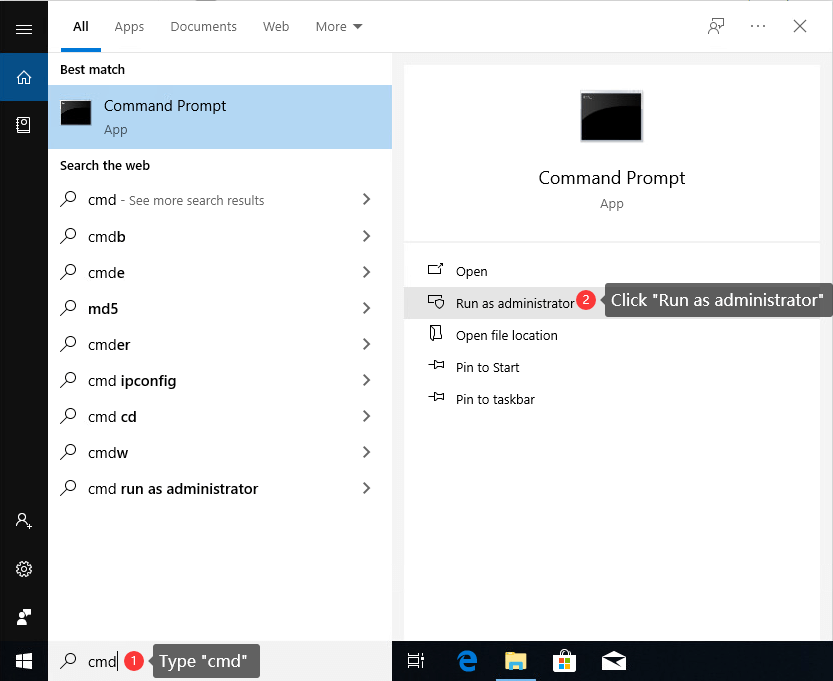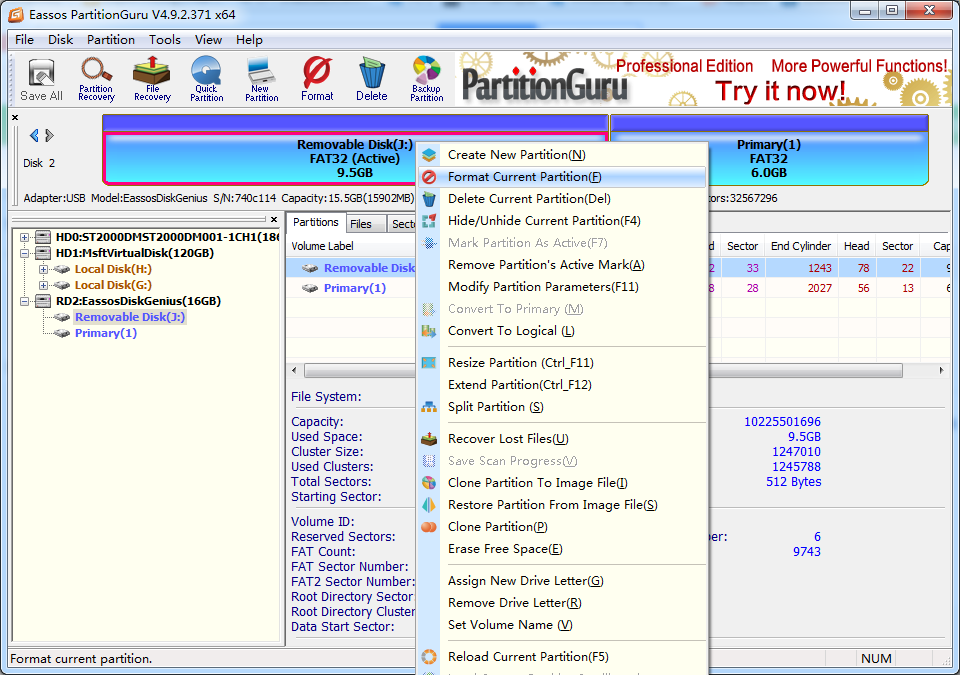This article discusses “The volume is too big for FAT32” error, telling why and when this volume too big error occurs and how to format large HDD to FAT32 step by step.
Symptom of “The volume is too big for FAT32” error
If you format a large partition or USB hard drive to FAT32 file system under Windows, you can only see NTFS or exFAT in the drop list for file system section. Windows can format a disk which is larger than 32GB to FAT32 with DOS command prompt. However, if the hard drive is 1TB or larger, the formatting will give error “The volume is too big for FAT32”.
Most computer users own more than one hard drives or external drives. Though it’s recommended to format disk into NTFS, some users still want to format removable disk to FAT32 in order to transfer files from Mac.
Here is a real story told by customers:
“I’ tried formatting my 500GB external hard drive to FAT32 so that I can use it on PS3. I tried on Windows 7 computer, but FAT32 is not available. I googled this issue online. All advise to format hard disk with command prompt. But that didn’t work and gave error ‘The volume is too big for FAT32’ after it hit 90 percent. Is there other solution out there that can help me?”
Limitations of FAT32 file system
- FAT32 is flexible and robust file system providing enhancements over previous FAT file system, and yet it has a couple of limitations. This part explains limitations existing in FAT32 file system with Windows operating system, which can account for the volume too big issue.
- Clusters can’t be larger than 64KB; otherwise some application won’t be able to calcite disk space correctly.
- A FAT32 volume must contain at least 65,527 clusters. Users can’t increase cluster size on a volume using FAT32 file system format so that clusters is less than 65,527.
- The maximum possible cluster number on a FAT32 volume is 268,435,445. There is a maximum of 32KB per cluster with the space demanded for file allocation table. Thus the maximum disk size is about 8TB.
- Users can’t decrease cluster size for FAT32 volume, hence FAT size is larger than 16MB less 64KB.
- You can’t format a volume whose size is larger than 32GB using FAT32 file system in Windows. If you want to format a volume larger than 32GB, use NTFS file system. Note: if you try the formatting, the process will fail in the end with error: Logical Disk Manager: Volume size too big.
- A file larger than 4GB can be created or stored on a FAT32 volume. If you copy a file larger than 4GB, you’ll get error “File is too large for the destination file system”.
Solutions to fix “The volume is too big for FAT32”
There are several methods to format HDD or USB to FAT32 even when it is larger than 32GB. You can use either Command Prompt or third-party FAT32 format tool to change file system to FAT32. If you are not comfortable using command line, the format tool is a good choice, as it is more easy to use. In this guide, we are going to use format using both Command Prompt and FAT32 formatter.
Important: Formatting a drive will erase all data, thus please back up all data before formatting your disk.
Method 1: Format USB / HDD to FAT32 with Command Prompt
- Open Command Prompt. Click Start button and type cmd in searing box. Right click the item in the searching result and select Run as administrator. Windows users can open it by right-clicking Start menu and select “Command Prompt (Admin)”. If you are prompted to provide password or confirmation, then enter password or click OK.

- type the command format /FS:FAT32 G: and hit Enter key. In this command, the letter G is the drive letter of the disk you want to format and it may be other letters on your computer. Replace G with the correct drive letter which can be seen in Windows Explorer. Make sure correct drive letter is entered here; otherwise the process will format wrong partition.
- Confirm formatting by typing Y. It’ll prompt with information “All data on non-removable disk drive will be lost! Proceed with Format”.
- Wait for the formatting to complete. The process may take some time, which mainly depends on operating system and disk speed. However, if the process is too slow and you don’t want to wait, you can try the solution on Method 2.
Method 2: Format disk with free FAT32 format tool
PartitionGuru is powerful and free partition manger which allows you to format hard drive and USB drives to FAT32, exFAT, NTFS or Ext4 in Windows XP/vista/7/8/10. With this format tool you can perform quick or slow format, set cluster size, specify drive letter, etc. The easy-to-use UI makes formatting and easier task.
- Connect the disk to be formatted to a Windows-based computer.
- Download, install and launch Eassos PartitionGuru Free. If it is run from your computer for the first time, check option “I have read and agreed the license agreements of this product” and click OK.

- Locate and select the volume you want to format and right-click it to select “Format Current Partition”.
- Select FAT32 from the drop-down list and click Format button. As to cluster size you can use the defaulted value if you do not have special requirement.
- Click Yes on the message box saying “Are you want to format the partition (or volume)? All files on this partition will be lost. Select Yes to continue.” Wait for a second and the formatting completes.
